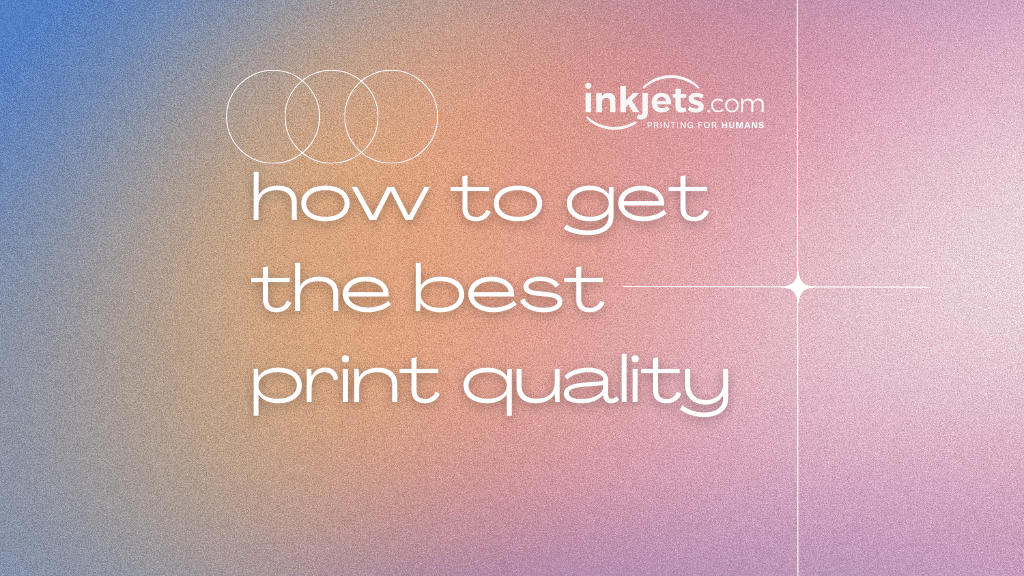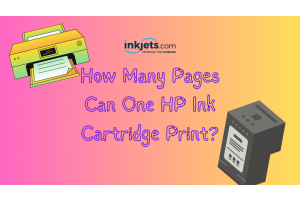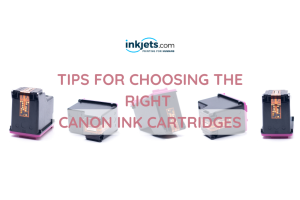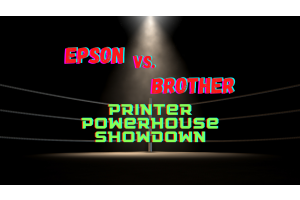
Follow these easy steps to learn how to print better results in seconds.
Whether you're printing vacation photos of your family or a business proposal
to win over a new client, high-quality prints make an impression that lasts.
We put together a few simple tips to help you get high-quality prints every time.
This will help you put your best print forward.
How It Works
The "Printer Settings" or "Printer Properties" menu makes it easy
to change the print quality settings that come with every printer.
In the printer settings menu, there is a drop-down menu called "Print Quality"
that lets you set the quality of your document.
Depending on what kind of printer you have, the names of the settings
will be different, but they will all be grouped in the same way
and have the same quality options:
"Draft" or "Eco-mode" on some printers lets you print quickly and with little ink.
Choose this if you want to save ink or are printing something simple, like an email.
The default choice for print quality is "Normal" or "Standard."
This is the best way to print most things.
"Best" or "High" quality uses the most ink and makes the highest-quality prints.
Choose this for photos or prints you want to show off.


Select the Best Paper
A client will be much more interested in a business proposal
printed on presentation paper with clear, black text
than one printed on thin copy paper with almost
no ink left.
Choose the right kind of paper for the job if you want
the best print quality.
Inkjet and laser printers don't always need a certain type of paper.
Multi-purpose copy paper works fine for basic printing jobs,
but if you want better results, you can buy paper made for
your printer.
Inkjet paper soaks up the liquid ink that is sprayed on a page.
It is slightly thicker than regular copy paper, so the images
printed on it look better and are more clear.
Laser printer paper can handle heat because it fuses
the toner powder to the page. This makes the blacks
darker and the lines sharper.
You can use other kinds of paper besides inkjet
and laser printer paper.
For certain projects, you can also use special papers
like photo paper, presentation paper, fine art paper,
cardstock, and others.
Check the manual for your printer to see what kinds of paper it can handle, then choose the right one.
How to Choose Printer Cartridges
The right paper is just as important as the right ink cartridges.
Standard inkjet printers use ink cartridges that are made
for printing everyday documents like text, photos,
and simple color images.
Toner cartridges are what laser printers use, and they are better
for printing text.
These printers are faster than inkjets, but because the toner cartridge
is powdery, it can't make the same tonal differences.
This can make some color prints look dull.
Photo inkjet printers are best for people who want to print
better color pictures. When making a print, these printers
usually need a few more cartridges than an inkjet
or laser printer.
This gives a wider range of colors and better color reproduction
on projects where accurate colors are important,
like professional photography and art prints.
How to Interpret Dots per Inch (DPI)
Dots per inch, or DPI, is the number of dots on a printed page
that fit into one square inch. When you look at a printout,
you see an image made up of all these little dots.
The better the print quality or resolution, the higher the dpi.
This is because more ink droplets fill that one-inch space
when the dpi is higher.
Most inkjet printers can print between 300 and 720 dots per inch (DPI),
while laser printers can print between 600 and 2,400 DPI.
When you change the print quality in the printer settings menu,
you choose a different DPI range for your printout:
Draft mode: Has the lowest dpi and is used when the ink is low
or when high-quality prints aren't needed.
Normal: Suitable for most print jobs
Best: The dpi is better than usual
Max DPI: The highest dpi setting for print quality
that can be used
Don't worry about DPI if all you want to print is text or business graphics.
Most printers are made to handle this kind of printing easily,
and no matter what printer you have,
you will get high-quality prints.
But if the quality of your prints is important to your work,
like when you're making professional photo prints,
DPI is something you should keep in mind.
If you set your printer to print at max DPI, it will use a lot of ink,
so don't be surprised if your cartridges run out quickly.
Make use of the original files
For the best results, be sure to print the original file
from the program where it was made.
If you want to save time or make changes quickly, it can be easy
to use a smaller file size or a screenshot of the file.
But if you do this, you won't be able to print the image
at its best quality, so the printout will be less good.








